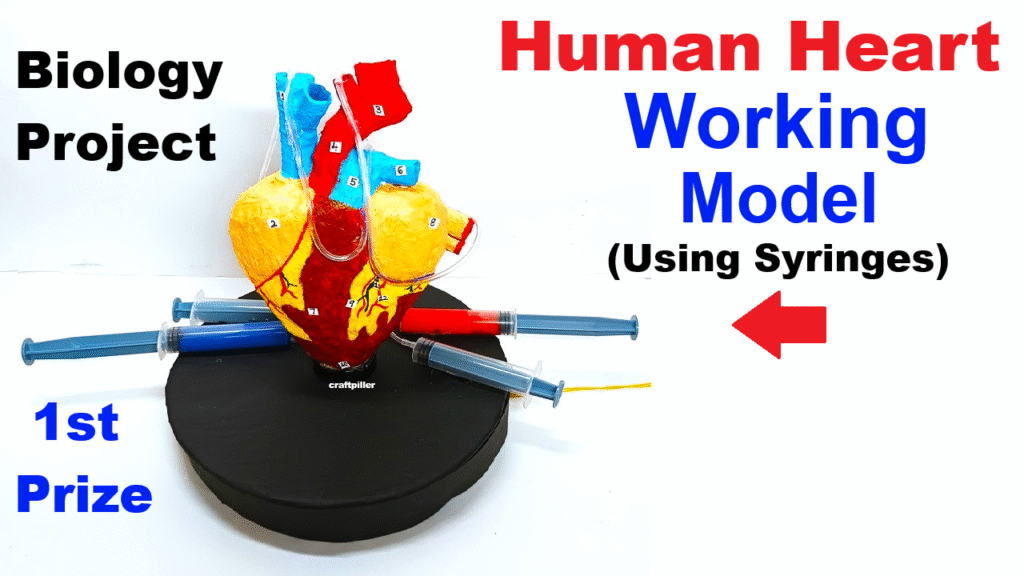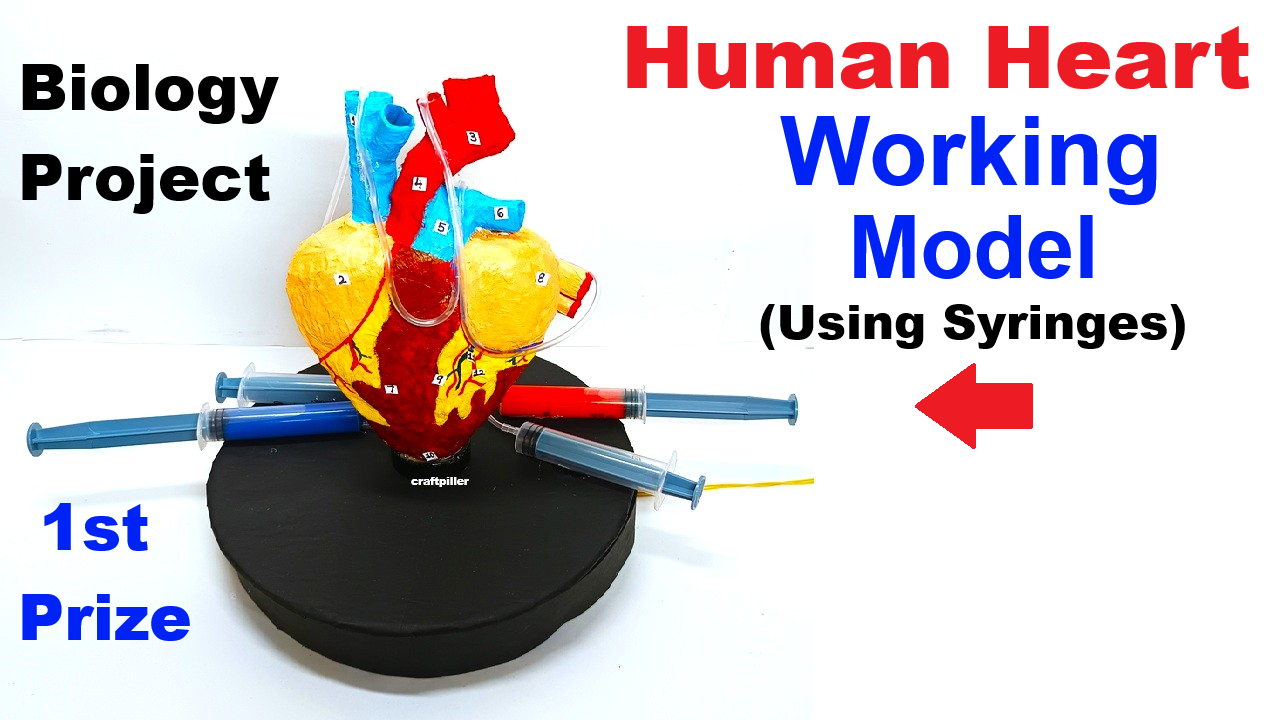Concept Overview:
The human heart is one of the most important organs in the body. It is a muscular organ, about the size of a fist, located in the chest slightly towards the left side. The heart works like a pump, sending blood to all parts of the body.
The heart has four chambers – two upper chambers called atria and two lower chambers called ventricles. Blood from the body enters the right atrium, goes to the right ventricle, and is sent to the lungs to get oxygen. Oxygen-rich blood comes back to the left atrium, moves into the left ventricle, and is pumped to the entire body. This continuous flow of blood is called circulation.

- Four-chambered heart: Simulate left/right atrium and ventricle using tissue-covered cardboard domes.
- Syringes Create a pulsating heartbeat using a crank or cam mechanism connected to syringes.
- Tubes: Show direction of blood flow with red (oxygenated) and blue (deoxygenated) colored pipes.
How to Make the 3d Heart Working Model:
1. Build the Heart Structure (3D Look):
- Cut out 4 chamber shapes from cardboard: 2 small for atria, 2 larger for ventricles.
- Stick them on a cardboard base in proper position (like a real heart).
- Wrap each with red/pink tissue paper using glue to give a muscle-like appearance.
- Use red & blue paints to draw veins and arteries on the structure.
2. Create the Circulatory Flow:
- Connect syringes with tubing to simulate inlet and outlet of blood.
- Label tubes:
- Blue tubes for deoxygenated blood
- Red tubes for oxygenated blood
- Show arrows to indicate direction of flow.
3. Syringe Movement Mechanism:
- Attach syringe , it pulls and pushes syringe plungers to simulate heart contraction and relaxation.
4. Add Final Touches:
- Paint the heart with shiny red, pink, purple, add artery/vein details.
- Use tissue to create texture for myocardium (muscle).
- Add labels: Atria, Ventricles, Pulmonary artery, Aorta, Vena cava, etc.

